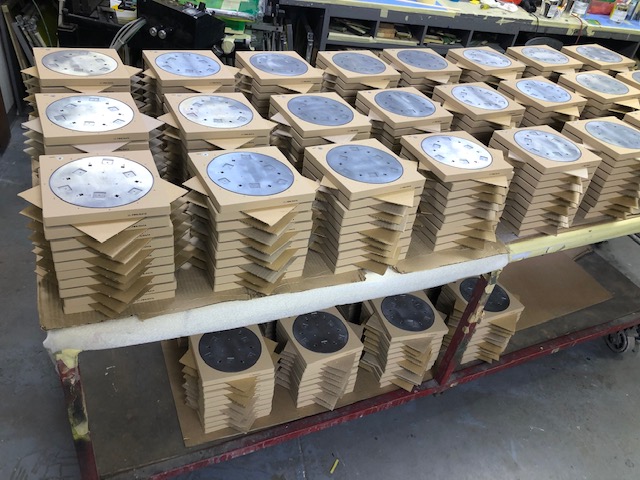MILITARY ∙ MEDICAL ∙ AEROSPACE ∙ ELECTRONICS ∙ SEMICONDUCTOR ∙ CONSTRUCTION
Passivation is a chemical process that makes a metal surface more resistant to corrosion by creating a thin, protective oxide layer. This layer acts as a barrier between the metal and environmental elements like air, moisture, and chemicals.
⚙️ How Passivation Works – Step by Step
-
Metal Surface Preparation
The metal is cleaned to remove contaminants such as:-
Oil, grease, or machining lubricants
-
Surface iron or scale
-
Oxides or weld discoloration
-
-
Chemical Treatment
The cleaned metal is immersed in a mild acid solution (usually nitric acid or citric acid).-
This acid dissolves free iron and other surface impurities.
-
It allows the metal’s own chromium, nickel, or other alloying elements to oxidize.
-
-
Formation of Passive Layer
After the acid treatment, the metal surface reacts with oxygen in air or water to form a thin, stable oxide film:-
For stainless steel, this layer is primarily chromium oxide (Cr₂O₃).
-
This layer is only a few nanometers thick, but very effective.
-
-
Rinsing and Drying
After treatment, the part is rinsed with water and dried to prevent spotting or contamination.
🧪 Common Metals That Are Passivated
| Metal | Protective Oxide Layer |
|---|---|
| Stainless Steel | Chromium oxide (Cr₂O₃) |
| Aluminum | Aluminum oxide (Al₂O₃) |
| Titanium | Titanium dioxide (TiO₂) |
| Nickel alloys | Nickel oxide (NiO) |
🔍 Key Points
-
Passivation ≠ Coating: It’s not a paint or plating—it’s a chemical conversion of the metal’s own surface.
-
It improves corrosion resistance but doesn’t fix pitting, scratches, or mechanical flaws.
-
It is especially important after machining stainless steel, where surface iron contamination can occur.
🧰 Where It’s Used
-
Aerospace and medical parts (cleanroom-grade stainless)
-
Food-grade stainless equipment
-
Semiconductor components
-
Marine and chemical processing industries
⚠️ Limitations
-
Passivation works best on high-quality alloys (like 304 or 316 stainless).
-
If the metal is low in chromium, or heavily contaminated, passivation may be ineffective.
-
It doesn’t protect against chloride-induced corrosion (e.g., saltwater damage) without proper material choice.


